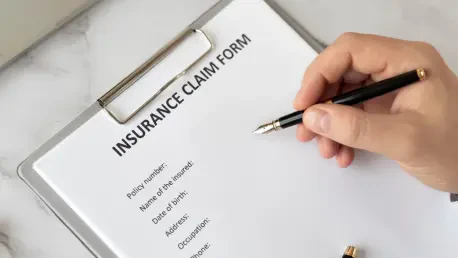Insurance claims adjusters often face a challenging job that places them at the intersection of policyholder expectations and the realities of insurance coverage. Their role involves bridging the gap between what policyholders believe their insurance policies cover and the actual terms and limits set forth in those policies. Misunderstandings about coverage and claims processing can lead to frustration and disappointment for both the adjusters and the policyholders. Understanding these complexities is essential to improve the overall experience and outcomes for everyone involved.
Understanding Coverage Limitations
A widespread misconception among policyholders is the idea of having “full coverage”. Many believe that their insurance policy will cover any possible situation without exception. However, adjusters frequently encounter scenarios where policyholders are surprised to learn about exclusions and sub-limits. For example, water damage and mold are commonly excluded or limited in coverage. Discovering these exclusions only when a claim arises can be a source of significant frustration for policyholders.
To prevent such surprises, policyholders should take proactive steps in understanding their policies. Asking their agents specific questions such as “What’s not covered?” is crucial. Additionally, exploring endorsements or optional coverages that could fill potential gaps can provide a more comprehensive safety net. Being informed about these aspects of their insurance policy not only sets realistic expectations but also leads to better preparedness in case of a loss.
Understanding the fine print and the potential limitations of a policy takes time and effort. However, this investment can pay off significantly when a claim arises. By knowing the scope and restrictions of their policies, policyholders can make informed decisions about additional coverages and endorsements that might be necessary to fully protect their assets. This awareness helps in minimizing surprises and ensures a smoother claims process, reducing the emotional toll that unexpected claim rejections can have.
The Emotional Toll on Adjusters
A significant part of an insurance adjuster’s day involves meeting people in distressing circumstances, such as after fires, accidents, or natural disasters. These interactions can be emotionally taxing for both the adjuster and the policyholder. For instance, the story of a woman who lost her semi-tractor trailer just before Thanksgiving vividly illustrates the emotional strain faced by both parties. Despite the adjuster’s efforts to expedite the claim, bureaucratic delays meant the woman did not receive her settlement until February, leading to financial distress and ultimately resulting in her eviction.
Maintaining professionalism in these challenging situations, even when adjusters empathize deeply with the claimants, is part and parcel of the job. Adjusters are often bound by the procedural requirements and the need for multiple levels of approval for large loss claims, which can prolong the claims process. This bureaucratic nature, though necessary for ensuring thoroughness and accuracy, can have severe consequences for policyholders, underscoring the essential balance that adjusters must maintain between empathy and strict adherence to policy terms.
Adjusters’ roles require them to navigate these emotional landscapes while staying objective and professional. This tension can be emotionally taxing, as they often witness firsthand the devastating impacts of loss and damage on people’s lives. The emotional toll is an aspect of the job that is frequently underestimated but deeply impactful. Understanding this helps build empathy towards adjusters, acknowledging the complexity of their role and the human element inherent in the claims process.
Safety Concerns in the Field
Adjusters sometimes face safety threats that go beyond the normal scope of their job, which may come as a surprise to many. From instances of verbal abuse to being followed off properties at gunpoint, these interactions can escalate due to policyholders’ frustrations with the outcomes of their claims rather than personal grievances against the adjusters. Such threats highlight the high-stress environment in which adjusters operate and the potential risks they face while performing their duties.
These safety concerns emphasize the importance of implementing better protocols to protect adjusters. This could include providing training on de-escalation techniques and ensuring that clear communication is maintained throughout the claims process to help alleviate frustrations before they reach a boiling point. Additionally, it is crucial for insurance companies to support their adjusters by recognizing these safety risks and taking proactive measures to mitigate them.
Understanding the inherent risks can also foster a more respectful and empathetic interaction between policyholders and adjusters. Recognizing that the adjuster is there to help resolve claims within the bounds of the policy terms, and not as an adversary, can go a long way in maintaining a constructive and safe dialogue. By working together and maintaining clear and respectful communication, both parties can navigate the claims process more effectively, reducing stress and potential conflicts.
Operational Pressures and Challenges
The pressures faced by insurance adjusters from both policyholders and insurance company higher-ups are immense. Policyholders often expect quick settlements due to the urgency of their situations, while managers and executives may critique adjusters for being too slow or overly generous with claims. This balancing act can be particularly stressful when dealing with high-value claims that require extensive documentation and multiple levels of approval. Despite advances in technology, the digital age has not necessarily streamlined these processes, as comprehensive checks and approvals remain crucial for large claims.
These operational pressures underscore the need for efficient claims handling systems. Streamlining internal processes to reduce delays can significantly improve service quality. Insurance companies must invest in better training and resource allocation for their adjusters, ensuring they have the tools and support to handle claims promptly and accurately. This not only aids in quicker settlements but also enhances the overall trust policyholders place in their insurance providers.
Adjusters navigate a complex landscape where they must adhere to strict policy guidelines while managing the expectations of policyholders. Efficiency in claims processing can be dramatically improved by leveraging advanced technologies for documentation and approvals. Additionally, fostering a work environment that values and supports adjusters’ efforts can lead to more accurate and timely claims resolutions. By addressing these operational challenges, insurance companies can enhance the claims experience for both adjusters and policyholders.
Practical Advice for Policyholders
Insurance adjusters often offer practical advice to policyholders to help ensure a smoother claims process. One of the most critical pieces of advice is to thoroughly read and understand one’s insurance policy before a loss occurs. Familiarity with the terms, conditions, and exclusions of a policy can prevent unexpected surprises during the claims process. Policyholders can benefit greatly from taking and updating photos of their properties and possessions regularly, which can serve as invaluable evidence in the event of a claim.
Honesty and accuracy in reporting claims are also pivotal. Providing detailed and truthful accounts of the incident, as well as maintaining records and receipts, can facilitate faster and more efficient handling of claims. Staying actively engaged in the claims process, asking questions, and seeking clarifications whenever necessary can help in resolving uncertainties and ensure that policyholders are fully aware of the progress and status of their claims.
Additionally, policyholders should not hesitate to explore optional coverages or endorsements that might enhance their coverage. Endorsements for specific scenarios like water damage, ordinance and law, or service line issues can fill gaps in standard policies, offering more robust protection. Proactively discussing these options with an insurance agent ensures that policyholders are better prepared for various contingencies, leading to a more effective insurance experience.
Empathy and Understanding
Insurance claims adjusters have a tough job, positioned between policyholder expectations and the practicalities of insurance coverage. Their primary role is to mediate the gap between what policyholders think their insurance policies cover and the actual terms and limits of those policies. This often results in misunderstandings about coverage and the claims process, which can cause frustration and disappointment for both the adjusters and the policyholders. Adjusters have to navigate these complexities daily, striving to improve the overall experience and results for everyone involved. In addition, they frequently deal with the emotional stress of individuals experiencing loss or damage, making their role even more challenging. Effective communication and a deep understanding of both the policy details and the human element are crucial for adjusters to perform their duties effectively. Consistent training and staying updated with policy changes can help mitigate misunderstandings, leading to better outcomes for all parties involved.









